lightfield
Latest

Lytro is shutting down, but some employees may head to Google
Lytro made a name for itself by allowing you to take a photo and then change the focus point after the fact. Its "Light Field" cameras never really took off, though, and neither did its pivot to pro-styled cameras and virtual reality. Now the company has announced that as of today it won't be "taking on any new productions or providing professional services as we prepare to wind down the company."
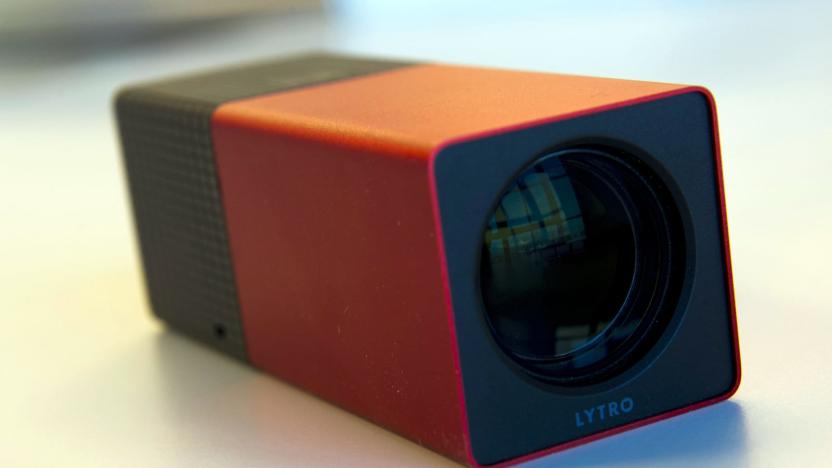
Google is reportedly acquiring Lytro for around $40 million
Lytro burst onto the scene in 2011 with its then-unprecedented "light field" technology that powered an oddly-shaped camera with the ability to refocus pictures after they're taken. The first $400 camera arrived in 2012, however, after a pivot to virtual reality (where its technology creates photographs and videos that you can move around in to experience from different angles) and pro cameras, TechCrunch reports the company will be acquired by Google. According to unnamed sources, Google is mostly grabbing the company's technology and patents for about $40 million, with some employees having already departed.
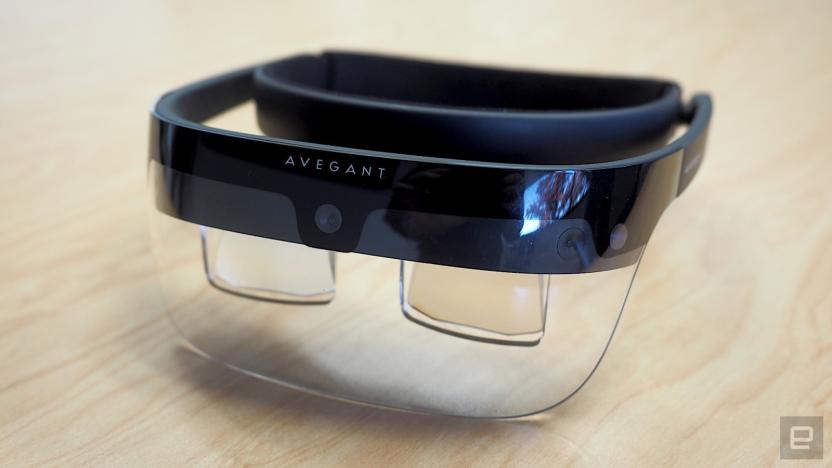
AR firm Avegant cuts half its workforce and picks new CEO
Avegant has drawn a lot of attention in the wearable world between its Glyph personal screen and its light-field augmented reality headset, but it's facing uncertain times. The Verge has learned that the startup cut more than half of its workforce (it's now down to "fewer than 20" workers) and has replaced CEO Joerg Tewes with co-founder Ed Tang. Most of those left are involved in research and technology partnership, according to the insiders.
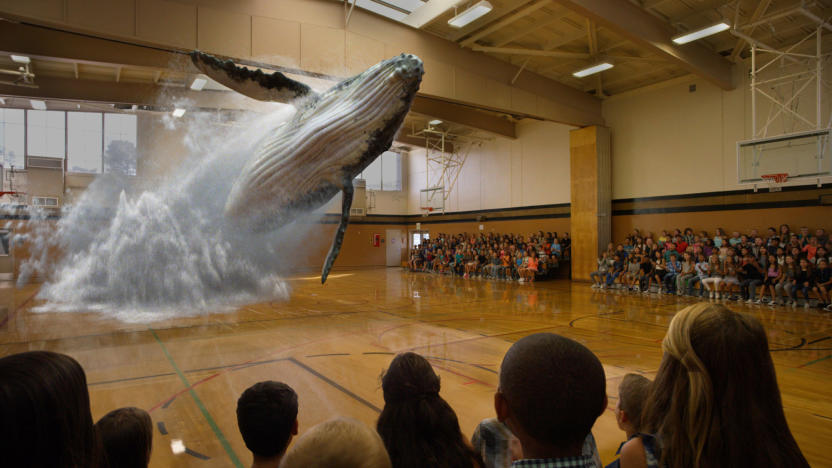
Magic Leap One: All the things we still don’t know
It's that time of year again: the special season when everybody's favorite mythical creature makes its annual appearance. That's right, it's Magic Leap hardware teaser season! Seemingly once a year, the secretive startup reveals what it's been up to, and on Wednesday it revealed renderings of its latest AR headset prototype. The company even deigned to allow a Rolling Stone reporter to take the system for a spin. But for everything that Magic Leap showed off, the demonstrations and teaser materials still raise as many questions as they answer. There's a whole lot about the Magic Leap system that we don't know, so maybe let's hold off on losing our minds about the perceived imminent AR revolution until we do.

Lytro shuts down its multi-focus photo sharing platform (updated)
Remember Lytro's cool, but kinda gimmicky "light-field" photography? It let you take pictures without a defined focus point and post them on a special online platform, where users could click on which part they wanted to be sharp. It never caught on with consumers, and Lytro discontinued its pricey Illum camera (above) and switched gears to video and VR. Up until recently, though, users could still post the interactive "living pictures," but Lytro has announced that as of November 30th, the platform (pictures.lytro.com) has been killed.

Futuristic racing game 'Lightfield' lands on PS4 and Xbox One
If you have a hankering for a different kind of racing game, Lightfield might pique your curiosity. You maneuver around by clinging to objects in a stylized, futuristic environment, with light trails streaming behind you. At any given moment, you can leap off the surface, parkour-style to find the fastest possible line to victory. Visually, it sort of looks like Tron meets Miami Vice, with pastel blue, pink and green colors trailing behind ships.
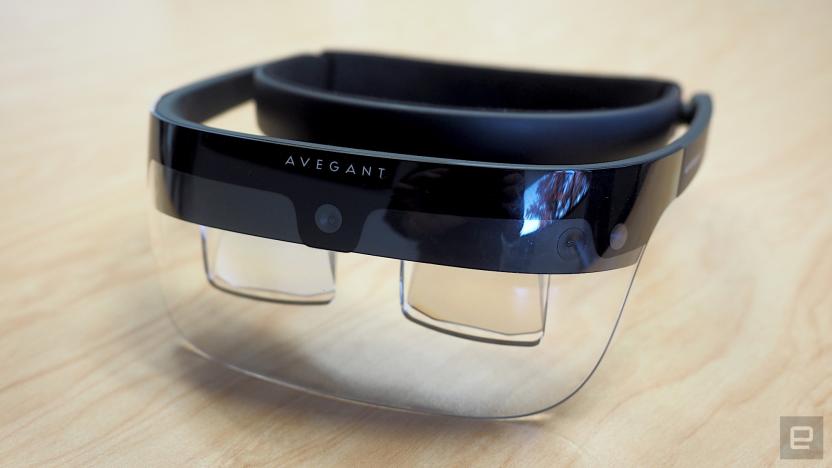
Avegant's light-field tech gives hope to a mixed-reality future
Virtual reality has arrived. With high-end gear like the Oculus Rift, the HTC Vive and PS VR (and mobile-friendly models like the Gear VR and Google's DayDream) on the market for well over a year now, it's safe to say that VR is here to stay. The state of augmented reality, however, is far murkier. While much has been said about products like Microsoft's HoloLens headset and the mysterious Magic Leap, consumer-friendly AR still seems years away. But a recent demo from a Bay Area startup has given me hope that the future of augmented reality could actually be a lot closer than we thought.
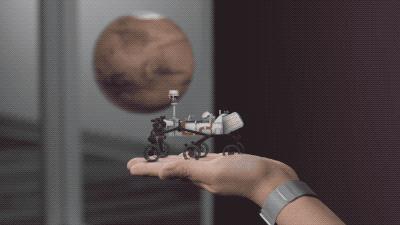
Focus is key to blending virtual objects with the real world
You might remember Avegant for its unusual take on the video headset. The Glyph looked like (and doubled up as) headphone cans but worked pretty well. We called it "a wearable cinema for serious movie fans." Now, the startup is taking on a bigger challenge with Light Field, its "mixed reality platform" that can visualize objects "at multiple focal planes". That means that it can offer variably focused virtual objects in the real world. Until now, the inability to change focus has meant virtual objects appear out of place in the real world. Take a look at the image above: The Mars Rover in the hand is in the same position (and focus) as the hand, while Mars and the corridor behind are out of focus until that focus shifts. (Milanese Apple Watch band optional. We hope.)

Lytro's first pro movie camera is designed for visual effects magic
While there are plenty of advanced digital movie cameras, most of them aren't really designed for the modern realities of movie making, where computer-generated effects are seemingly ubiquitous. You'll still have to bust out the green screen if you want to put those real actors in a digital world. Lytro might have a better way, though. It's introducing the Lytro Cinema, a movie camera built with digital effects in mind. Since Lytro's light field technology captures a massive, 3D picture of the environment (755 RAW megapixels at up to 300FPS), you might never need a green screen again -- you can accurately determine the objects you want to keep in a given scene.

We're one step closer to navigable 3D pictures of real places
If you've experienced a VR representation of a real place, chances are that you've just been looking around a static, 360-degree panorama of a room. OTOY believes that the days of the fixed-camera 3D picture are now done thanks to light-field technology, the same image refocusing tech you'll find in a Lytro. In short, a pair of DSLRs on a prototype rig spin around to capture pictures of a space with light field lenses. When that data is pulled into a computer, it creates a virtual version of that picture with unprecedented fidelity. The best thing, however, is that the company believes that users can then move about the image as they see fit.

'Light Field' 3D maps take VR broadcasting to the next level
Ever since I experienced a live 3D virtual reality broadcast for the first time, I've been giving demos of the technology to anyone who will sit still long enough for me to put a Gear VR on their head. Across the board, the reactions have included at least two things: "This is amazing," and, "Can you move around like you're really there?" Now, NextVR says the answer to that question is yes, since it's adding "Light Field" (aka plenoptic) capture technology to existing rigs (like this 6K unit shown above) that will let viewers look around the scene with full six degrees of freedom. This is similar to the tech Lytro uses for its cameras that lets you change focus after a picture is taken -- and just got a $50 million investment to implement on VR. According to NextVR, its patented approach creates a 3D geometric model of the scene (shown after the break) ready for headsets like the Oculus Rift, Sony's Project Morpheus or even augmented reality units like Microsoft's HoloLens or Magic Leap's... whatever it is.

Lytro to focus on VR and video with $50 million investment
Lytro -- maker of "shoot now, focus later" cameras -- is diving into the virtual reality and video market, following an investment of $50 million led by GSV Capital. The market shift means Lytro will lay off 25 - 50 of its 130 employees, and at the same time hire new folks with expertise in VR and video. Lytro is best known for its tubelike, selective-focus cameras released in 2012, though its newest model, the Illum, is a high-end SLR-style device. The company has been feeling out its target market for a while, and while we thought the new camera was better than its predecessor, VR might turn out to be a better fit for Lytro overall.

Lytro's light field camera tech to boost night vision and space imaging
Lytro wants other companies to use its light field photo technology to improve their devices, and not just photography wares. In order to do that, the company outed the Lytro Development Kit (LDK) as part of its Platform initiative. At first, you might think this if for other consumer device makers, but it goes way beyond that. In the announcement, the outfit tossed out some examples of more commercial R&D-type scenarios for its imaging know-how. "Since Lytro's inception, we've continually been approached by a number of organizations wanting to collaborate with us on a wide variety of new applications," said CEO Jason Rosenthal. Things like NASA improving its imaging in space and Army Night Vision projects are already using the kit, and there's potential for things like a gadget that analyzes soil samples for scientists. There's a hefty fee to get access to the goods, so this is definitely a B2B move, but it'll certainly be interesting to see the results.

Glasses-free 3D projector offers a cheap alternative to holograms
Holograms are undoubtedly spiffy-looking, but they're not exactly cheap; even a basic holographic projector made from off-the-shelf parts can cost thousands of dollars. MIT researchers may have a budget-friendly alternative in the future, though. They've built a glasses-free 3D projector that uses two liquid crystal modulators to angle outgoing light and present different images (eight in the prototype) depending on your point of view. And unlike some 3D systems, the picture should remain relatively vivid -- the technology uses a graphics card's computational power to preserve as much of an image's original information (and therefore its brightness) as possible.

NVIDIA Research's near-eye light field display prototype eyes-on (video)
A quick stroll through the Emerging Technologies section of SIGGRAPH usually reveals a collection of university projects and the latest Disney Research endeavor. However, we don't usually see the likes of NVIDIA amongst the fold there. This time around, though, the component maker is showing off an undertaking from its Research sector: near-eye light field displays. To show the project off, a pair of OLED mircodisplays were installed on a glasses-like frame with a box for the electronics stashed up top. Those Sony ECX332A panels measure 15.36 x 8.64mm wield a resolution of 1,280 x 720 through 24-bit color pixels (which equates to a smidge over 83 pixels per millimeter). The diminutive displays open up the door for thinner and lighter head-mounted units that can sort "accurate accommodation, convergence and binocular-disparity cues." The light field that's constructed directly over the pupil allows the viewer to focus at multiple depths and create a field of view of about 70 degrees. Both of those aspects were quite apparent to our peepers upon getting locked in for a quick demo. Despite being situated so close to the eye, the unit still provides some sharp images that we witnessed first hand. Of course, the close proximity causes some pixel loss at the hands of a decreased spacial resolution. One pretty neat aspect to this whole system is that software tweaks can be made to account for someone's glasses or contacts prescription -- software that's powered by NVIDIA GPUs and OpenGL, of course. Without having to modify the hardware, changes to the microdisplays are sorted sans the need to switch to another set or make physical adjustments. For a bit more explanation of the unit, check out the video that resides just past the break and full findings that were presented here in Anaheim at the coverage link that follows. %Gallery-194623%

Lytro to get Perspective Shift and Living Filters for more focus-shifting fun (video)
Lytro has just announced a software update that expands upon the multidimensional elements of the little light-field point-and-shoot. The Lytro Desktop software will get two new features, dubbed Perspective Shift and Living Filters, both of which expand upon the device's focus-shifting capabilities. Perspective Shift lets you change the photo's center of perspective, while Living Filters are interactive image effects that range from cool to kooky. We had a chance to get an early look at these features, so join us after the break for our impressions and video of them in action.

Lytro camera getting parallax effect and 3D display support, lands in Hong Kong (video)
Lytro isn't done extending the usefulness of its light field camera just because we have manual controls. Another update due by the end of the year will take advantage of that focus-independent sensor to allow a parallax-based 3D effect in photos: invoke a 'full' focus in reviewing shots and you can start poking around the scene in a limited way without having ever touched a dual-sensor camera. Appropriately, we're also getting support for examining photos on 3D monitors and TVs that emphasize the added depth. The promised features come hand-in-hand with Lytro's immediate availability in Hong Kong, where 8GB blue and gray cameras are selling for $3,888 HKD ($502 US) and the 16GB red model goes for $4,688 HKD ($605). Check out our Chinese crew's eyes-on look at the parallax effect in a video after the break.

How would you change the Lytro?
Few products make everyone here at Engadget quite as giddy with excitement as Lytro's light-field camera. Given how regularly we need to photograph things, we were desperate to know if this was going to revolutionize the way we snapped pictures. It had more than a few things going for it, innovative product design, great engineering, it was fast, responsive and had a great UI. However, the pictures themselves were of a low resolution, and the depth-of-field trickery only works with extreme close-up-and-background shots where you can mess around with your bokkeh. As nice as it is in theory (and practice, on a well-lit day), it's certainly not going to replace your DSLR any time soon -- but given that the company's presumably working on version 2.0 of the device, what would you suggest they tweak?

Lytro video camera 'a possibility', would need more processing muscle
While we impatiently await a Lytro to call our own -- or at least rigorously review -- it looks like the light field technology could be used for video. Ren Ng, CEO of Lytro and the man behind the camera's focus-dodging optical wizardry, mentioned that the main barrier between the curious camera lens and video recording is the amount of processing power required to manipulate all that fully-lit input. He also mentioned that Lytro is continuing to develop the wireless connectivity within the device, something that wasn't fully baked during our hands-on. If it's a processing power issue, those incoming quad-core smartphones might be able to help squeeze some video out of that f/2.0 lens...

Lytro camera hands-on (video)
You knew Lytro was up to something, but with its infinite focus light-field powered camera out of the bag, how does it actually stack up in real life? In a word: novel -- you certainly won't be tossing your regular camera for this shooter, at least not in its current incarnation. Still the concept of shoot now, ask focus questions later is revolutionary, so hop on past the break for our initial impressions. %Gallery-137034%










